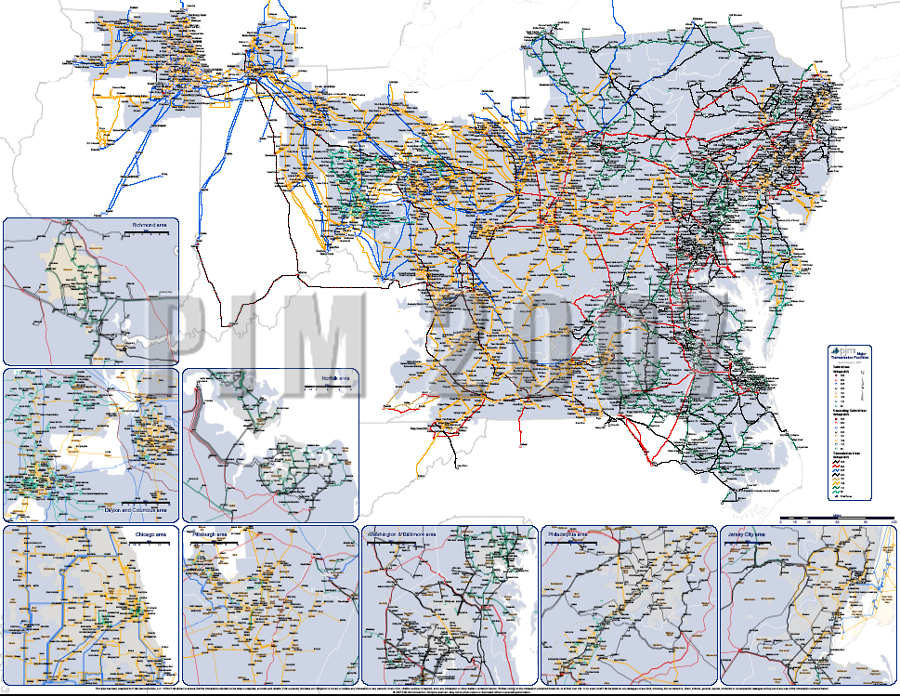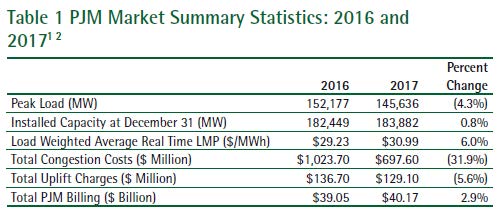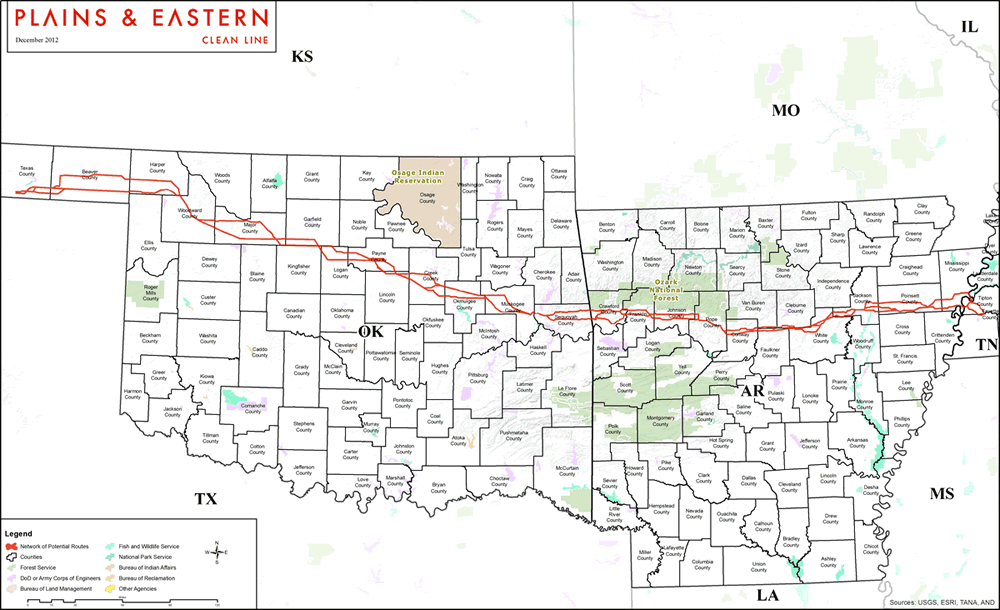Plains & Eastern Clean Line DOA — thanks DOE!
March 23rd, 2018

This says it all!
CONGRATULATIONS TO BLOCK PLAINS & EASTERN!!!
DOE Drops Its Deal With Clean Line; Wind Project Won’t Cross Arkansas
Hot off the press – PJM Monitoring Analytics!
March 8th, 2018

It’s out, the PJM Monitoring Analytics “State of the Market” report. Check the pages at the very beginning for info about “external subsidies” and proposed subsidization of uneconomic nuclear generation.
Important factoid – peak demand down 4.3%

Here’s the 2017 State of the Market Report:
Volume I
Volume I (2MB PDF) contains the introduction.Volume II
Volume II (14MB PDF) contains detailed analysis and results.
Check out the real-time PJM Locational Marginal Pricing map:
Comment Filed – Power Plant Siting Act
February 9th, 2018

Yes, it’s that time of year again, and today’s the deadline for Comments for the Power Plant Siting Act Annual Hearing:
And there ya have it. Until next year…
Plains & Eastern Clean Line Dead?
January 24th, 2018

From Alison Milsaps and Dave Ulery, Block Plains and Eastern Clean Line:
To recap the events of recent weeks: Plains & Eastern, Clean Line’s regulatory crown jewel and the only of its projects to be fully (if questionably) permitted, is DEAD in Arkansas. Hallelujah. Don’t take our word for it, though. Let’s look at a little evidence:
Hubris: Clean Line’s Michael Skelly and the End of the Plains and Eastern Project…
You know, I love it when this happens.
Under the agreement, Clean Line Energy retains project assets east of Oklahoma, and NextEra Energy Resources owns only the project assets in Oklahoma.
Clean Line Energy added that the transaction will continue the project’s forward momentum and install a new sponsor to a transmission solution to the burgeoning wind sector in Oklahoma and the Southwest Power Pool.
A Clean Line Energy spokesperson on Dec. 22 told TransmissionHub of the deal, “We cannot disclose financial information.”
Clean Line Energy Partners, a Houston-based developer of five major transmission lines for wind-generated electricity, has dropped its interconnection agreement with TVA for one of its most promising projects after the federal utility declined to buy what Clean Line officials said would be cheaper and cleaner power for TVA…
… But after years of study, TVA said the Clean Line project didn’t make economic sense for the nation’s biggest government-owned utility, since TVA already has enough power-generating capacity and is on path to get more than half of its power from carbon-free sources. TVA President Bill Johnson said the intermittent nature of wind power would require TVA to build other backup power generators, including natural gas plants, that would offset the promised savings from the wind-generated power sources alone.
“We’re looking at a power demand in the future that is flat, or declining slightly, so we don’t anticipate needing major additions to power generation for a decade or more,” Johnson said.
“We all are wondering at this point” what is going on, said Julie Morton, of Van Buren. “We are disconnected on the western end now. The TVA was going to take 3,500 of the 4,000 megawatts it was going to generate, but now it is disconnected on that end.
“We are stuck in the middle, unplugged at both ends, and the only way out for us is if Clean Line completely implodes, which I think is happening, and the Department of Energy withdraws from the project.”
and now…
Using powers contained in the Energy Policy Act of 2005, the department moved the project forward over the objections of Arkansas leaders.
Among other things, the law would enable the use of eminent domain to obtain property from unwilling sellers.
But the participation agreement allows the department to back out of the deal if “the Commencement Date has not occurred by December 31, 2018.”
In the letter, delegation members urged Perry to “pause the Project to either study or terminate its participation before the deadline.”
Since it was unveiled, the power line project has generated controversy.
Arkansas lawmakers ask DOE to block Clean Line transmission project
Don’t know what more we could possibly need to show that this project is O. V. E. R. I do wonder if the appellate case was dismissed so there would be no precedent, and then, immediately after it was dismissed, all this happens. Then, if they or someone else wants to try a Section 1222 project, the door remains open????
Look who’s in the news!
January 5th, 2018

Yes, we all know that Mike Bull wrote most of the energy law now in place! But there’s no mention of those many years of work at House Regulated Industries Committee though…
And we all know that there are some big holes and problems with the wind siting statutes, rules, and standards. What will it take to get some of the problems worked through, like some respectful wind siting standards? We’re just starting to see, at long last, after years and years of complaints, some Public Utilities Commission action on wind noise issues.
Bent Tree_Noise Monitoring and Monitoring Report_20179-135856-01
Siting will have to be addressed, because despite sound modeling that says “no problem,” there are indeed problems. Despite shadow flicker modeling that says “no problem,” there are indeed problems.
Preventative siting is long overdue and needs to start NOW! And what about those already affected? “Buy the Farm” for wind? It’s overdue. Action after the fact is not the best of options, prevention is always the key, but for those now attempting to live in untenable circumstances, foisted on them by the nuisance moving into their community, and permitted by the Commission, what are the options?
Wind project in southern Minnesota gets pushback
Hey Mikey, how ’bout helping get to some solutions???